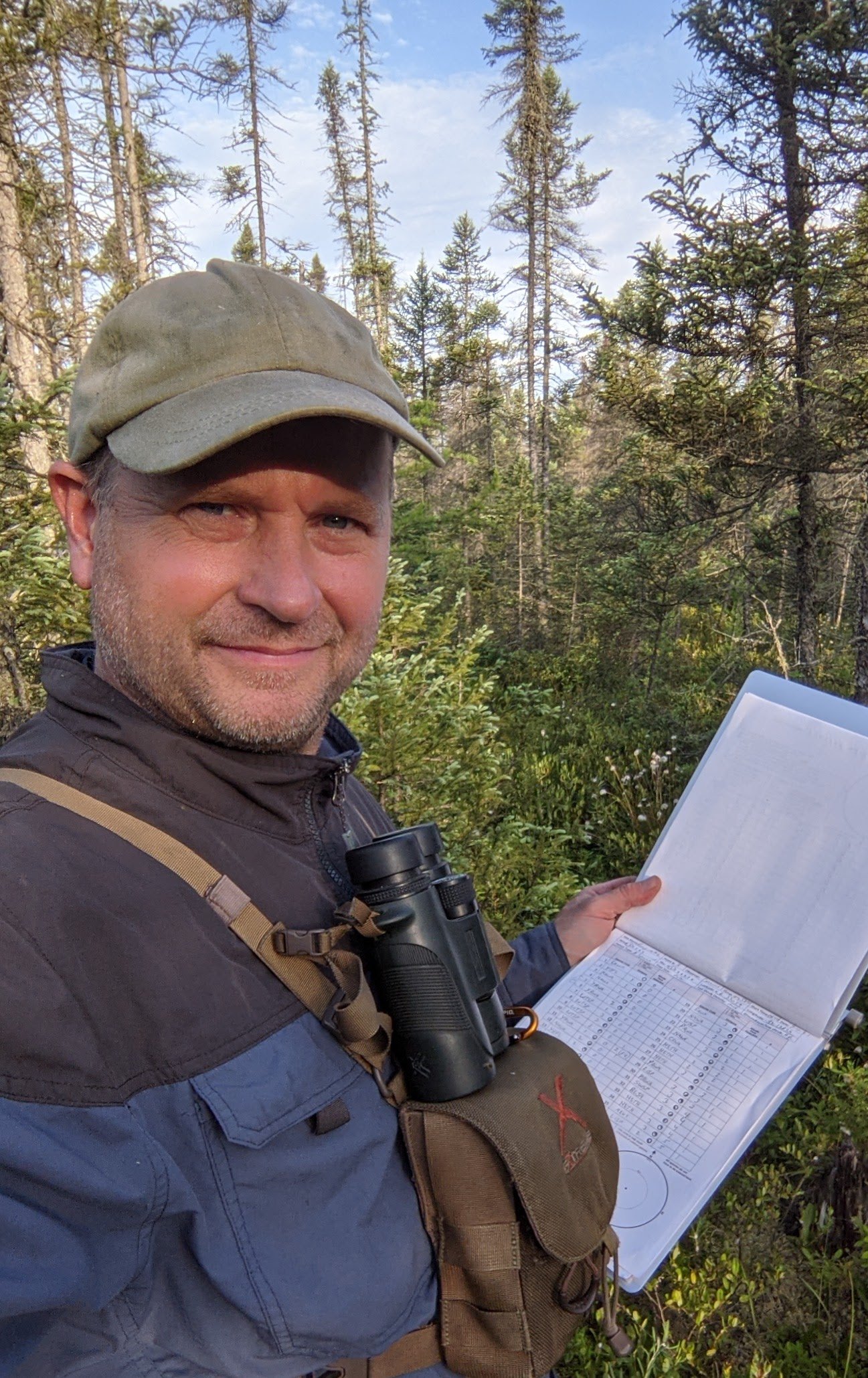Looking for a needle in a haystack
Brian Collins was nervous.
The ace birder and Unity-Balsam Lake High School teacher has conducted thousands of bird surveys for the Wisconsin Department of Natural Resources over the past 15 years, often for rare species -- but never had the stakes seemed so high.
He was on the hunt for Connecticut warblers, hard to find in the best of times, but particularly challenging now they had seemingly vanished from all but a single core area in northwestern Wisconsin.
Would he find the birds’ territories? And if he did, would he unwittingly step on these ground-nesting birds or lead a fox or other predator to them, further dooming their survival?
On June 13, Collins found his answers. Following some leads from DNR Conservation Biologists Nick Anich and Ryan Brady, he was searching in a stand of old jack pine in Bayfield County when he heard a male Connecticut warbler.
“When I heard the first bird sing, I grinned from ear to ear, as much out of relief as joy,” Collins says.
While taking a quick point count – standing in the same spot for 7 minutes and documenting all the bird species he could identify by sight or sound -- it was clear to him there was a second Connecticut warbler singing to the north -- and a third he detected far to the south when he took another point count.
“In less than an hour, I had located all three territories," Collins says. "I was thrilled, but I also knew that we were hoping for more.”
“When I heard the first bird sing, I grinned from ear to ear, as much out of relief as joy.”
The three breeding pairs he found was lower than the seven to 10 pairs they expected, but Collins was able to collect a treasure trove of information about one of North America’s least understood songbirds and its habitats.
Every day for the next month he returned to the jack pine stand around 5 a.m., carefully placing his feet on pocket gopher mounds or through-walking to reach the birds’ territories. He sat on a three-legged stool he packed till 10 a.m., recording the birds' locations on GPS and their behaviors in his notebook.
Males singing so loudly – sometimes for 2 ½ hours at a time! -- that Collins could detect them from as far away as 690 meters.
Females spending nearly all their waking hours walking under a carpet of blueberry bushes, looking for caterpillars.
Males singing a complex song that Collins later learned had only been scientifically documented for the first time in 2021.
And young birds hatching in all the nests, and, Collins believes, fledging and embarking on their maiden migratory flight to South America.
“The evidence they gave me was pretty spectacular,” he says.
A female Connecticut Warbler, also known as a hen, spied by Brian M. Collins during summer surveys for DNR. Seeing a female is a rare occurrence as they spend most of their time on the ground foraging for insects or nesting. Photo by Brian M. Collins
Settle in for Collins’ recent presentation to the Wisconsin Society for Ornithology to see and hear more of this evidence.
DNR’s Ryan Brady opens the presentation with background on Connecticut warblers, Brian Collins’ appears about 23 minutes in, and Ryan returns at 1:04 to cover what DNR and partners are doing to help Connecticut warblers.



